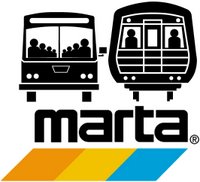It's electric...

It seems these days that transportation sytems throughout the country are making rash decisions to update their services at the expense of user-friendly service. I have ranted about this before with regard to the Massachusetts Bay Transportation Authority's recent implementation of an electronic fare collection system, termed the Charlie Card, which is slowly invading the system and infuriating customers throughout Boston. In principle, the system makes perfect sense; switching from token systems to electronic fare cards should cut down wait time in obtaining fare currency, as token vending machines are often old and therefore out of service, forcing the customer to wait in line to obtain tokens from a booth attendant.
Well, the MBTA's new system has failed, in my experience, to streamline the process of entering the station, paying fare, and boarding a train (well, that's another story, since waiting for an MBTA trolley or train inevitably involves a longer wait than advertised). The machines, which were clearly chosen by the MBTA based on the lower bidder, are faulty by design. They fail to accept slightly worn credit cards (mine has been rejected repeatedly). They present the customer with a plethora of slots for whatever form of payment - cards, tokens, change, dollar bills, wampum, tobacco leaves, gold bullion - whatever payment method the customer wishes, which translates to a visual overload that leaves one completely dumbfounded as to how to proceed. The machine spits out a ticket, more questions on the screen, prints a receipt (sometimes)...wasted paper and time.
 A friend of mine visiting me from Atlanta, GA, this past weekend told me about the new fare collection system for Atlanta's rapid transit system, MARTA (it's smarta!). Unlike the T's plastic and magnetic-strip card, MARTA's Breeze card is one of those RFID systems t
A friend of mine visiting me from Atlanta, GA, this past weekend told me about the new fare collection system for Atlanta's rapid transit system, MARTA (it's smarta!). Unlike the T's plastic and magnetic-strip card, MARTA's Breeze card is one of those RFID systems t hat uses an electronic chip embedded within the card...the circuitry is visible simply by holding the card up to the light. Therefore, the card is quickly flashed in front of an electronic detector at the turnstile, rather than inserted into a slot like the Charlie Card. I can see this having the advantage of preventing system failures, as there is no risk of jamming machines with the card, but I can also see how its use would be confusing for those who are unfamiliar with how such a card would work. More problematic, however, is that the card vending machines are difficult to use, as my friend had to spend a few minutes figuring out the machine...and she's fairly technically inclined.
hat uses an electronic chip embedded within the card...the circuitry is visible simply by holding the card up to the light. Therefore, the card is quickly flashed in front of an electronic detector at the turnstile, rather than inserted into a slot like the Charlie Card. I can see this having the advantage of preventing system failures, as there is no risk of jamming machines with the card, but I can also see how its use would be confusing for those who are unfamiliar with how such a card would work. More problematic, however, is that the card vending machines are difficult to use, as my friend had to spend a few minutes figuring out the machine...and she's fairly technically inclined.I'm still baffled why these systems haven't followed the tried-and-true fare collection system used by the Washington, DC Metro system. The system, as far as I know, has used an electronic card since it was built in the mid 1970s. Unlike the other newer systems, the Metro's card has the advantage of printing the balance on the actual ticket after the fare has been subtracted from the debit card. Therefore, the patron always knows the value of what is in his or her pocket. The gates are nothing fancy - just a simple heavy plastic rotating barrier that retracts to let the passenger through after he or she inserts the fare card into the gate system - no fancy and flimsy glass swinging gates - as are found on the MBTA - with inconvenient multiple-second delays after the fare card has been inserted and retrieved. The T has already experienced problems with the faulty design of these gates.
I'll be interested to see how these systems work out the kinks over the coming months. I myself can't speak for the people in Atlanta, whose system isn't as widely used as Boston's MBTA in the first place. However, the general public has been less than impressed with the MBTA's efforts to modernize its fare collection system. Perhaps the money should have been more wisely used for repairing the ailing system before squandering the money on sustandard machines. I myself had no problems handling brass tokens...they withstood the test of time over the past 110 years.

3 Comments:
Great post. Yeah, I think DC's system is great, and you're right, it's simple and convenient. Airport kiosks are an interesting example, too. It seems they should save time, but customers spend forever figuring out how to use them--and in my case, the machine frequently won't read my card, meaning that I have to key in my flight information and/or frequent flier number.
I just find it odd that ATMs are able to read cards in the worst shape...and scanning the card is made simple because the machine takes it in and does whatever it needs to read the card. Why can't these new systems use the same kind of technology?
little note also. D.C. is switching to an RFID tag in dual operation with the original paper fare cards. I think the intention is to allow it to interoperate with VA and MD commuter rail in the future but there having implementation trouble.
Post a Comment
<< Home